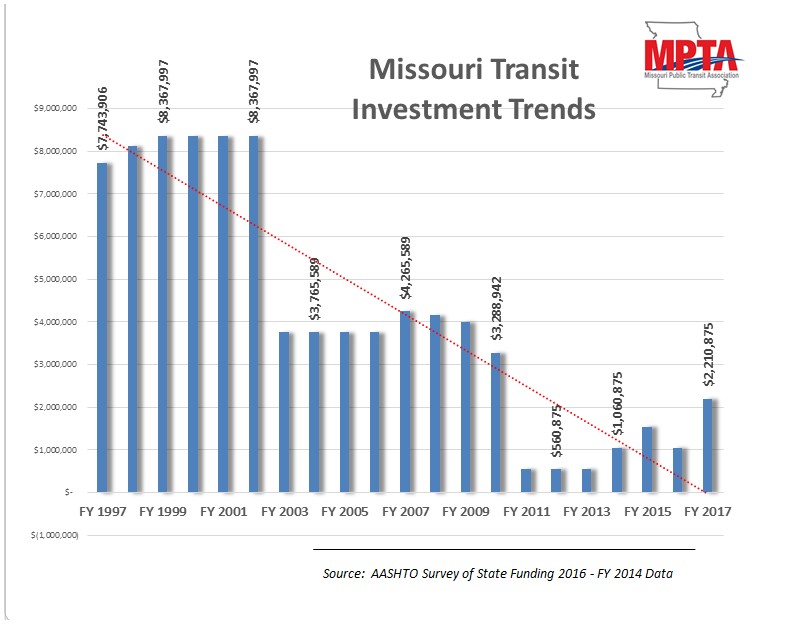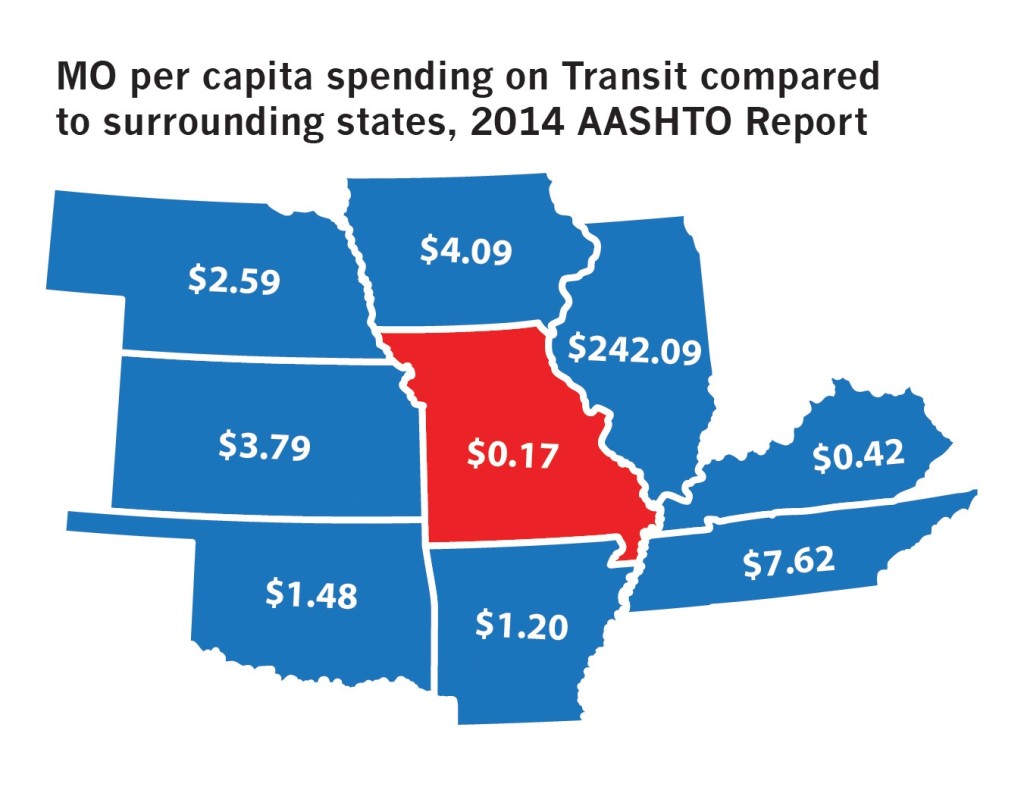 How and where we invest in Missouri’s transportation infrastructure has a major impact on growth and development patterns in the State. In particular, investments in public transit in mature communities leads to urban revitalization and redevelopment — as is occurring in Kansas City along the recently-opened Streetcar alignment. More than $1.7 billion in development has gone up within a one-half mile corridor of the route.
How and where we invest in Missouri’s transportation infrastructure has a major impact on growth and development patterns in the State. In particular, investments in public transit in mature communities leads to urban revitalization and redevelopment — as is occurring in Kansas City along the recently-opened Streetcar alignment. More than $1.7 billion in development has gone up within a one-half mile corridor of the route.
Public transit investments in rural communities provide access to jobs, education and healthcare while also creating greater opportunities for many Missourians. OATS, the largest rural transit provider in MO, employs more than 700 people in the State’s smaller communities. Right now, Missouri transit purveyors provide more than 67 million trips annually. However, many providers are facing a crisis resulting from chronic underinvestment in capital assets and infrastructure improvements, which is leading to an erosion in levels of service.
Without public transit, many Missourians would be without access to employment, educational opportunities, and healthcare services. Well-resourced, well-operated transit connects communities, provides an excellent return on investment, and helps grow the economy. From the dialysis patient in rural Macon who needs transportation to treatment, to the working mom in Kansas City with family schedules to keep, to the office worker in St. Louis heading to the office each day, to the university student in Springfield on a tight budget, transit keeps Missouri moving forward.
Economics of Transit:
- Every dollar invested in transit has a $4 impact. Every $10 million in capital investment in public transit yields $30 million in increased business sales, and every $1 billion invested in public transportation supports and helps create more than 50,000 jobs.
- City and business leaders in Kansas City say KC Streetcar ridership is spurring new flow of money into the downtown area (http://fox4kc.com/2016/10/13/city-and-business-leaders-say-kc-streetcar-ridership-is-spurring-new-flow-of-money-into-downtown-area/)
- Since MetroLink opened in 1993 in St. Louis, there has been at least $16 billion in new development within a 10 minute walk of transit stations. The new infill station at the CORTEX innovation Community in Midtown in St. Louis is cited as one of the main reasons mixed use development is happening at such a rapid pace in that area.
- One of the best examples for return-on-investment from transit can be seen from the Cleveland Healthline, which reports leveraging $114 in private investment for every dollar invested in transit. http://www.riderta.com/healthline/about
- Employers are moving (back) to urban areas served by transit to be closer to their workforce, potential recruits, customers and strategic partners. (Smart Growth America – “Core Values”)
- Statistics show homes located near public transit with higher frequency service are valued 42 percent higher. (National Association of Realtors)
- Transit drives jobs. Most transit trips are to work (60 percent nationally).
- OATS, the largest rural transit provider in the country, employs more than 700 Missouri residents while serving more than 32,000 Missourians on a daily basis in 87 counties.
- The average St. Louis/Kansas City household spends nearly 20 percent of its budget on transportation. A low income individual spends up to 40 percent of their income on transportation. Transit helps alleviate this significant cost, freeing up money for both basic and choice products and services.
- Public transit helps solve problems created by automobiles. These problems include traffic and parking congestion, traffic accidents, road and parking infrastructure costs, auto costs to consumers, inadequate mobility for nondrivers, excessive energy consumption and pollution emissions. (Evaluating public transit benefits and costs – Todd Alexander Littman)
The Missouri Public Transit Association strongly supports Missouri investment in transit for both capital and operating. The Bottom Line . . . Transit needs to be everywhere, for everybody, every day in Missouri.
